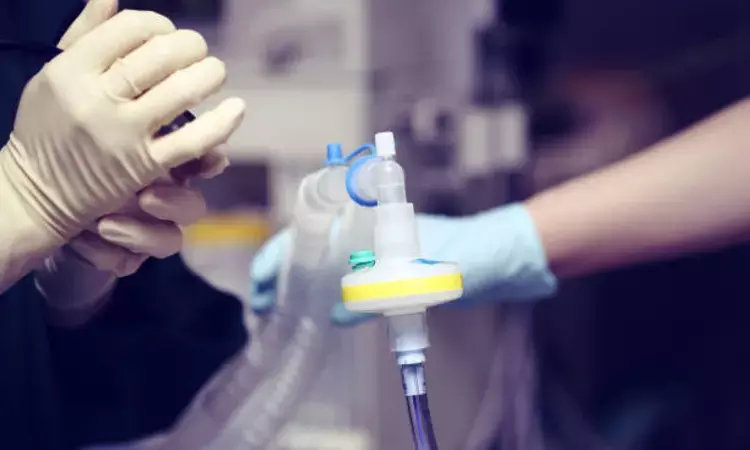- Home
- Medical news & Guidelines
- Anesthesiology
- Cardiology and CTVS
- Critical Care
- Dentistry
- Dermatology
- Diabetes and Endocrinology
- ENT
- Gastroenterology
- Medicine
- Nephrology
- Neurology
- Obstretics-Gynaecology
- Oncology
- Ophthalmology
- Orthopaedics
- Pediatrics-Neonatology
- Psychiatry
- Pulmonology
- Radiology
- Surgery
- Urology
- Laboratory Medicine
- Diet
- Nursing
- Paramedical
- Physiotherapy
- Health news
- Fact Check
- Bone Health Fact Check
- Brain Health Fact Check
- Cancer Related Fact Check
- Child Care Fact Check
- Dental and oral health fact check
- Diabetes and metabolic health fact check
- Diet and Nutrition Fact Check
- Eye and ENT Care Fact Check
- Fitness fact check
- Gut health fact check
- Heart health fact check
- Kidney health fact check
- Medical education fact check
- Men's health fact check
- Respiratory fact check
- Skin and hair care fact check
- Vaccine and Immunization fact check
- Women's health fact check
- AYUSH
- State News
- Andaman and Nicobar Islands
- Andhra Pradesh
- Arunachal Pradesh
- Assam
- Bihar
- Chandigarh
- Chattisgarh
- Dadra and Nagar Haveli
- Daman and Diu
- Delhi
- Goa
- Gujarat
- Haryana
- Himachal Pradesh
- Jammu & Kashmir
- Jharkhand
- Karnataka
- Kerala
- Ladakh
- Lakshadweep
- Madhya Pradesh
- Maharashtra
- Manipur
- Meghalaya
- Mizoram
- Nagaland
- Odisha
- Puducherry
- Punjab
- Rajasthan
- Sikkim
- Tamil Nadu
- Telangana
- Tripura
- Uttar Pradesh
- Uttrakhand
- West Bengal
- Medical Education
- Industry
Lower tidal volume ventilation by ECCO2R does not reduce mortality in respiratory failure: JAMA

UK: The use of extracorporeal carbon dioxide removal to facilitate lower tidal volume ventilation versus standard care ventilation does not significantly reduce 90-day mortality in patients with acute hypoxemic respiratory failure, a recent study has revealed. The study is published in the Journal of the American Medical Association (JAMA).
Acute hypoxemic respiratory failure is associated with significant mortality and long-term morbidity for survivors and is a leading cause of admission to intensive care units (ICUs). Invasive mechanical ventilation following tracheal intubation is often used as a life-saving intervention for maintaining adequate gas exchanges but contributes to overall mortality and morbidity of this condition.
Ventilation with a lung-protective strategy aiming for a tidal volume of 6 mL/kg predicted body weight and a plateau pressure less than or equal to 30 cm H2O in patients is one of the few interventions shown to reduce mortality in patients with acute hypoxemic respiratory failure and ARDS. However, lung hyperinflation and injury can still occur even when using lung-protective invasive mechanical ventilation. Further reduction in tidal volume may cause more adverse effects such as altered cardiac function and pulmonary hypertension.
Extracorporeal gas exchange, including extracorporeal carbon dioxide removal (ECCO2R), can facilitate mechanical ventilation even with lower tidal volume as its supports carbon dioxide removal.
Against the above background, James J. McNamee, Queen's University Belfast, Belfast, United Kingdom, and colleagues aimed to determine whether lower tidal volume ventilation facilitated by ECCO2R compared with standard care in patients with acute hypoxemic respiratory failure decreased mortality 90 days after randomization in REST -- a multicenter, randomized, allocation-concealed, open-label, pragmatic clinical trial.
The trial enrolled 412 adult patients receiving mechanical ventilation for acute hypoxemic respiratory failure, of a planned sample size of 1120, between May 2016 and December 2019 from 51 intensive care units in the UK. Follow-up ended on March 11, 2020.
Participants were randomized to receive lower tidal volume ventilation facilitated by extracorporeal carbon dioxide removal for at least 48 hours (n = 202) or standard care with conventional low tidal volume ventilation (n = 210).
The trial was stopped early because of futility and feasibility following recommendations from the data monitoring and ethics committee.
Key findings of the trial include:
- The 90-day mortality rate was 41.5% in the lower tidal volume ventilation with extracorporeal carbon dioxide removal group vs 39.5% in the standard care group (risk ratio, 1.05).
- There were significantly fewer mean ventilator-free days in the extracorporeal carbon dioxide removal group compared with the standard care group (7.1 vs 9.2).
- Serious adverse events were reported for 62 patients (31%) in the extracorporeal carbon dioxide removal group and 18 (9%) in the standard care group, including intracranial hemorrhage in 9 patients (4.5%) vs 0 (0%) and bleeding at other sites in 6 (3.0%) vs 1 (0.5%) in the extracorporeal carbon dioxide removal group vs the control group.
- 21 patients experienced 22 serious adverse events related to the study device.
"The use of extracorporeal carbon dioxide removal to facilitate lower tidal volume mechanical ventilation among patients with acute hypoxemic respiratory failure, compared with conventional low tidal volume mechanical ventilation, did not significantly reduce 90-day mortality," wrote the authors.
"They concluded, "due to early termination, the study may have been underpowered to detect a clinically important difference."
Reference:
The study titled, "Effect of Lower Tidal Volume Ventilation Facilitated by Extracorporeal Carbon Dioxide Removal vs Standard Care Ventilation on 90-Day Mortality in Patients With Acute Hypoxemic Respiratory Failure: The REST Randomized Clinical Trial," is published in JAMA.
DOI: https://jamanetwork.com/journals/jama/fullarticle/2783809
Dr Kamal Kant Kohli-MBBS, DTCD- a chest specialist with more than 30 years of practice and a flair for writing clinical articles, Dr Kamal Kant Kohli joined Medical Dialogues as a Chief Editor of Medical News. Besides writing articles, as an editor, he proofreads and verifies all the medical content published on Medical Dialogues including those coming from journals, studies,medical conferences,guidelines etc. Email: drkohli@medicaldialogues.in. Contact no. 011-43720751


